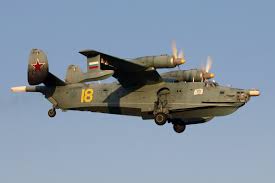Understanding the Be-12 Chayka: A Soviet Amphibious Marvel

The Be-12 Chayka: An Overview
The Be-12 Chayka, also known by its NATO reporting name ‘Mail’, is a remarkable amphibious aircraft developed by the Soviet Union during the late 1950s. This aircraft was primarily utilised for maritime patrol, anti-submarine warfare, search and rescue, and fire-fighting purposes, showcasing its versatility in various operational roles.
Design and Features
The Be-12 is characterised by its distinct design, featuring a high-mounted wing configuration and the ability to take off and land on both land and water. It has a length of approximately 29.5 meters, a wingspan of 30 meters, and can carry a payload of over 3,000 kilograms. One of its key features is the capability to be equipped with a range of weapons, including torpedoes and bombs, making it an invaluable asset during the Cold War.
Operational History
The Be-12 saw its first flight in 1960 and was officially introduced into service shortly thereafter. Throughout its operational history, it was primarily deployed by the Soviet Naval Aviation, performing critical missions across the Baltic and Black Seas. During the 1960s and 1970s, the Be-12 played a crucial role in the Soviet Union’s anti-submarine warfare strategy, countering the growing threat posed by NATO naval forces.
Legacy and Modern Relevance
Although the Be-12 was retired in the late 1990s, its impact on aviation and military tactics remains significant. Several airframes are still displayed in museums and used for specific roles in various countries today. In recent years, enthusiasts and aviation historians have advocated for the conservation and restoration of these aircraft, citing their unique place in aviation history.
Conclusion
The Be-12 Chayka stands as a testament to the ingenuity of Soviet engineering and its strategic importance during a pivotal era in history. As military aviation continues to evolve, the legacy of aircraft like the Be-12 serves as a reminder of the advances made in maritime operations and the importance of amphibious capabilities. For aviation enthusiasts and historians, the Be-12 remains a fascinating subject, symbolising a time when the boundaries of aircraft design were pushed to new heights.









